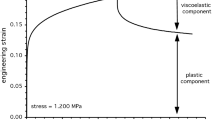Summary
A protein which produces a thermal hysteresis (a difference between the freezing and melting points) was purified from the hemolymph of the milkweed bug,Oncopeltus fasciatus. The amino acid composition of theOncopeltus thermal hysteresis protein is somewhat different from that of the larvae of the beetle,Tenebrio molitor, which is the only other insect from which such a protein has as yet been purified. The major difference between the two is the large amount of serine (30.5% of the amino acid residues) and glycine (20.0%) present in theO. fasciatus protein. Both insect proteins have a composition which consists of approximately 60% polar amino acids and lacks large amounts of alanine. In these respects they are quite different from the fish protein antifreezes. The apparent differences in structure of the thermal hysteresis proteins and glycoproteins indicates that these proteins have evolved independently and therefore offer an interesting example of convergent evolution.
Similar content being viewed by others
References
Asahina E (1969) Frost resistance in insects. Adv Insect Physiol 6:1–50
Baust JG, Miller LK (1970) Variation in glycerol content and it's influence on cold-hardiness in the Alaskan Carabid beetlePterostichus brevicornis. J Insect Physiol 16:979–990
Danks HV (1978) Modes of seasonal adaptation in the insects. I. Winter survival. Can Entomol 110:1167–1205
DeVries AL (1971a) Glycoproteins as biological antifreeze agents in Antarctic fishes. Science 172:1152–1155
DeVries AL (1971b) Freezing resistance in fishes. In: Hoar WS, Randall DJ (eds) Fish physiology, vol VI. Academic Press, New York, pp 159–190
DeVries AL (1980) Biological antifreezes and survival in freezing environments. In: Gilles R (ed) Animals and environmental fitness. Pergamon Press, Oxford New York, pp 583–607
DeVries AL, Lin Y (1977) Structure of a peptide antifreeze and mechanism of adsorption to ice. Biochim Biophys Acta 495:388–392
Dubois M, Giles KA, Hamilton JK, Rebers PA, Smith F (1956) Colorimetric method for determination of sugars and related substances. Anal Chem 28:350–356
Duman JG (1977a) The role of macromolecular antifreeze in the darkling beetle,Meracantha contracta. J Comp Physiol 115:279–286
Duman JG (1977b) Variations in macromolecular antifreeze levels in larvae of the darkling beetle,Meracantha contracta. J Exp Zool 201:85–92
Duman JG (1979a) Subzero temperature tolerance in spiders: The role of thermal-hysteresis-factors. J Comp Physiol 131:347–352
Duman JG (1979b) Thermal-hysteresis-factors in overwintering insects. J Insect Physiol 25:805–810
Duman JG, DeVries AL (1975) the role of macromolecular antifreezes in cold water fishes. Comp Biochem Physiol 52A:193–199
Duman JG, DeVries AL (1976) Isolation, characterization and physical properties of protein antifreezes from the winter flounderPseudopleuronectes americanus. Comp Biochem Physiol 54B:375–380
Fairbanks G, Steck TL, Wallack DFH (1971) Electrophoretic analysis of the major polypeptides of the human erythrocyte membrane. Biochemistry 10:2606–1617
Feeney RE, Yeh Y (1978) Antifreeze proteins from fish bloods. Adv Prot Chem 32:191–282
Hew CL, Fletcher GL, Ananthanarayanan VS (1980) Antifreeze proteins from the shorthorn sculpin,Myoxocephalus scorpius: Isolation and characterization. Can J Biochem 58:377–383
Kapitany RA, Zebrowski EJ (1973) A high resolution PAS stain for polyacrylamide gel electrophoresis. Anat Biochem 56:361–369
Kelly TJ, Davenport R (1976) Juvenile hormone induced ovarian uptake of a female-specific blood protein inOncopeltus fasciatus. J Insect Physiol 22:1381–1393
Margolis J, Kenrick KG (1968) Polyacrylamide gel electrophoresis in a continuous molecular sieve gradient. Anal Biochem 25:347–362
Miller LK, Smith JS (1975) Production of threitol and sorbitol by an adult insect: association with freezing tolerance. Nature 258:519–520
Moore S, Stein WH (1963) In: Colowick CP, Kaplan NO (eds) Methods in enzymology, vol VI. Academic Press, New York
Patterson JL (1979) The role of thermal hysteresis producing proteins and glycoproteins inTenebrio molitor larvae. Ph D Thesis, University of Notre Dame
Patterson JL, Duman JG (1978) The role of the thermal hysteresis factor inTenebrio molitor larvae. J Exp Biol 74:37–45
Patterson JL, Duman JG (1979) Composition of a protein antifreeze from larvae of the beetle,Tenebrio molitor. J Exp Zool 210:361–367
Perkins HF, Aranoff S (1959) A paper chromatographic method for the purification in shikimic acid U-C14 obtained from culture filtrates of a mutant ofEscherichia coli. Can J Biochem Physiol 37:149–150
Raymond JR, DeVries AL (1977) Adsorption inhibitions as a mechanism of freezing resistance in polar fishes. Proc Natl Acad Sci USA 74:2589–2593
Raymond JR, Lin Y, DeVries AL (1975) Glycoprotein and protein antifreezes in two Alaskan fishes. J Exp Zool 193:125–130
Rees MW (1946) The estimation of threonine and serine in proteins. Biochem J 40:632–635
Saini RW, Chiang HC (1966) The effects of subfreezing temperatures on the longevitiy and fecundity ofOncopeltus fasicatus (Dallas). Ecology 47:473–477
Salt RW (1966) Factors influencing nucleation in supercooled insects. Can Entomol 95:1190–1192
Somme L (1964) Effects of glycerol on cold hardiness in insects. Can J Zool 42:87–101
Zachariassen KE (1979) The mechanism of the cryoprotective effect of glycerol in beetles tolerant to freezing. J Insect Physiol 25:29–32
Author information
Authors and Affiliations
Rights and permissions
About this article
Cite this article
Patterson, J.L., Kelly, T.J. & Duman, J.G. Purification and composition of a thermal hysteresis producing protein from the milkweed bug,Oncopeltus fasciatus . J Comp Physiol B 142, 539–542 (1981). https://doi.org/10.1007/BF00688987
Accepted:
Issue Date:
DOI: https://doi.org/10.1007/BF00688987




